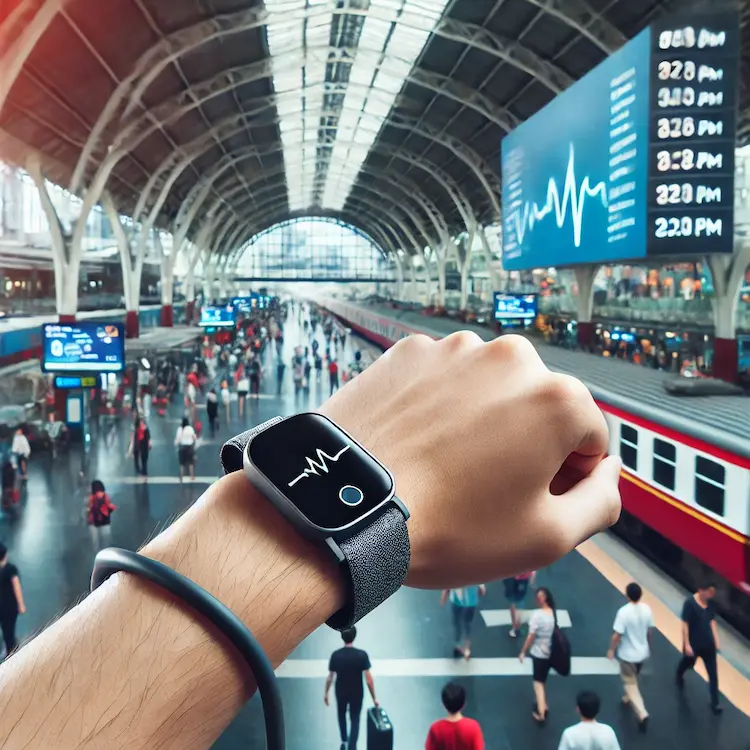Traveling can be exciting, but for individuals managing hypertension, it comes with the challenge of monitoring blood pressure on the go. Home Blood Pressure Monitoring (HBPM) is an essential tool for staying healthy during travel. This article provides a detailed guide to incorporating HBPM into your travel plans, its importance, methods, tools, and practical advice.
Importance of HBPM During Travel
Travel can disrupt routines, causing stress and unhealthy habits that may impact blood pressure. Here’s why HBPM is crucial:
- Health Maintenance: Monitoring blood pressure helps in early detection of abnormalities.
- Stress Management: Travel often causes anxiety. Tracking BP ensures it stays within safe limits.
- Medication Adjustment: Readings help adjust medications when environmental factors like altitude affect BP.
Relevant Statistics
- According to the World Health Organization (WHO), hypertension affects 1.28 billion adults globally.
- Regular HBPM reduces cardiovascular complications by up to 20%.
Methods of Monitoring Blood Pressure While Traveling
Different methods cater to travelers’ diverse needs. Here’s a comparison:
| Method | Advantages | Disadvantages |
|---|---|---|
| Digital Monitors | Portable, user-friendly, accurate | Requires batteries/power |
| Wearable Devices | Continuous tracking, discreet | Expensive, potential calibration issues |
| Manual Devices | No power needed, reliable | Bulky, requires skill |
- Digital Monitors: Ideal for short trips. Compact and easy to use.
- Wearable Devices: Perfect for active travelers needing real-time data.
- Manual Devices: Best for remote areas without power access.
Tools and Devices for Travel-Friendly HBPM
Investing in the right tools enhances convenience:
Portable Blood Pressure Monitors
-
- Compact size for easy packing.
- Examples: Omron Platinum, Withings BPM Connect.
Smart Wearables
-
-
- Devices like Fitbit or Apple Watch provide continuous BP insights.
- Sync with mobile apps for detailed analysis.
-
Travel Cases
-
-
-
- Protective cases prevent device damage.
-
-
Steps to Incorporate HBPM into Travel Plans
Choose the Right Equipment
- Opt for portable and clinically validated devices.
Create a Monitoring Schedule
-
-
- Record BP at consistent times daily (morning and evening).
-
Keep a Log
-
- Use apps like BP Companion or MyFitnessPal for seamless tracking.
Consult Your Doctor
-
- Discuss potential BP fluctuations due to travel.
Pack Medication Strategically
-
- Carry extra doses to avoid interruptions.
Practical Tips for Managing BP While Traveling
- Stay Hydrated: Dehydration elevates BP.
- Mind Your Diet: Avoid salty snacks common during travel.
- Stay Active: Walk or stretch during long flights or road trips.
- Manage Stress: Practice deep breathing or meditation.
Societal Impacts of HBPM During Travel
Incorporating HBPM benefits more than individual health:
- Reduced Emergency Healthcare Costs: Fewer travelers require urgent medical care.
- Increased Awareness: Promotes proactive health management.
- Improved Quality of Life: Encourages enjoyable and stress-free travel experiences.
Comparisons of Tools and Techniques
Here’s a comparison chart:
| Aspect | Digital Monitors | Wearables | Manual Devices |
|---|---|---|---|
| Cost | Moderate | High | Low |
| Ease of Use | High | Very High | Low |
| Portability | High | Very High | Moderate |
| Accuracy | Very High | Moderate | High |
Key Takeaways
- Preparation is Key: Equip yourself with reliable tools and a monitoring routine.
- Consistency Matters: Monitor BP regularly to detect anomalies early.
- Stay Informed: Understand how different methods and tools suit your travel needs.



